Papers by Anader Benyamin-Seeyar
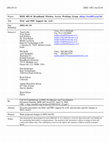
Describes procedures for MAC and PHY support for AAS, and provides specific changes to P802.16a/D... more Describes procedures for MAC and PHY support for AAS, and provides specific changes to P802.16a/D3 Purpose Make proposed changes to P802.16a/D3. Notice This document has been prepared to assist IEEE 802.16. It is offered as a basis for discussion and is not binding on the contributing individual(s) or organization(s). The material in this document is subject to change in form and content after further study. The contributor(s) reserve(s) the right to add, amend or withdraw material contained herein. Release The contributor grants a free, irrevocable license to the IEEE to incorporate text contained in this contribution, and any modifications thereof, in the creation of an IEEE Standards publication; to copyright in the IEEE's name any IEEE Standards publication even though it may include portions of this contribution; and at the IEEE's sole discretion to permit others to reproduce in whole or in part the resulting IEEE Standards publication. The contributor also acknowledges...
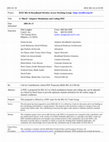
Re: Call for Contributions: Initial PHY Proposals (IEEE 802.16.3-00/24) Abstract A PHY is propose... more Re: Call for Contributions: Initial PHY Proposals (IEEE 802.16.3-00/24) Abstract A PHY is proposed for 802.16.3 in which modulation format and coding rate can be adjusted on a block by block basis to provide optimum channel utilization for the widest range of channel conditions. Purpose This proposal is offered as a PHY layer for the 802.16.3 Task Group Notice This document has been prepared to assist IEEE 802.16. It is offered as a basis for discussion and is not binding on the contributing individual(s) or organization(s). The material in this document is subject to change in form and content after further study. The contributor(s) reserve(s) the right to add, amend or withdraw material contained herein. Release The contributor grants a free, irrevocable license to the IEEE to incorporate text contained in this contribution, and any modifications thereof, in the creation of an IEEE Standards publication; to copyright in the IEEE’s name any IEEE Standards publication even though it...
Design and Performance Validation of Phantoms Used in Conjunction with Optical Measurements of Tissue, 2008

SPIE Proceedings, 2008
ABSTRACT One important challenge for in-vivo imaging fluorescence in cancer research and related ... more ABSTRACT One important challenge for in-vivo imaging fluorescence in cancer research and related pharmaceutical studies is to discriminate the exogenous fluorescence signal of the specific tagged agents from the natural fluorescence. For mice, natural fluorescence is composed of endogenous fluorescence from organs like the skin, the bladder, etc. and from ingested food. The discrimination between the two kinds of fluorescence makes easy monitoring the targeted tissues. Generally, the amplitude of the fluorescence signal depends on the location and on the amount of injected fluorophore, which is limited in in-vivo experiments. This paper exposes some results of natural fluorescence analysis from in-vivo mice experiments using a time domain small animal fluorescence imaging system: eXplore OptixTM. Fluorescence signals are expressed by a Time Point Spread Function (TPSF) at each scan point. The study uses measures of similarity applied purposely to the TPSF to evaluate the discrepancy and/or the homogeneity of scanned regions of a mouse. These measures allow a classification scheme to be performed on the TPSF's based on their temporal shapes. The work ends by showing how the exogenous fluorescence can be distinguished from natural fluorescence by using the TPSF temporal shape.
SPIE Proceedings, 2008
... Guobin Ma*, Simon Fortier, Muriel Jean-Jacques, Niculae Mincu, Frederic Leblond, Zahia Ichala... more ... Guobin Ma*, Simon Fortier, Muriel Jean-Jacques, Niculae Mincu, Frederic Leblond, Zahia Ichalalene, Anader Benyamin-Seeyar, and Mario Khayat ART ... However, if fluorophores are embedded inside a bulk tissue or turbid medium, there will be two more terms contributing to ...
Biomedical Optics, 2008
Abstract: A novel method is presented to separate target fluorescence signal from autofluorescenc... more Abstract: A novel method is presented to separate target fluorescence signal from autofluorescence background in vivo using their temporal features based on a-priori knowledge. The method is tested for GFP labeled tumors in mouse brain. ©2007 Optical Society of America OCIS ...
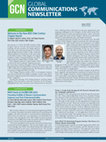
IEEE Communications Magazine, Jun 1, 2023
Past Secretary, and now Treasurer of the Chapter, highlighted the main activities and achievement... more Past Secretary, and now Treasurer of the Chapter, highlighted the main activities and achievement of the past term, off ering mature refl ections on the past experiences and ongoing challenges for the Chapter. On the other hand, Prof. Miguel Gutiérrez Gaitán, presented his plans, vision, and main ideas about the future of the Chapter, with focus on the development of internationalization and student branches. Among the planned activities for the present term, the IEEE ComSoc Chile Chapter is glad to announce the technical sponsorship for the 2023 South American Conference on Visible Light Communications (SACVLC), to be held at the Universidad of Santiago de Chile (USACH), between November 8 and 10, 2023. Moreover, the IEEE ComSoc Chile Chapter is enthusiastic on participating in the 2023 ComSoc Sister Chapters Program Project, led by Prof. Mohab Mangoud and Prof. Ricardo Veiga, which will greatly benefi t IEEE student branches worldwide. Lastly, also in the line of the internationalization plan, the whole new ExCom of IEEE ComSoc Chile Chapter is joining eff orts in bringing to Chile, two IEEE ComSoc Distinguished Lecture Tours (DLTs) among diff erent academic institutions, including UNAB, UDP, and USACH, among others. To conclude, the IEEE Chile ComSoc Chapter invite all the local, regional, and international community to contact the new Chair, Prof. Miguel Gutiérrez Gaitán (miguel.gutierrez@unab. cl) to joint eff orts and organize together further virtual, in-person, and hybrid activities around communication technology to "advance communications and networking technology for the betterment of humanity."
This document defines a proposed Physical Layer (PHY) for IEEE802.16.3 Broadband Wireless Access ... more This document defines a proposed Physical Layer (PHY) for IEEE802.16.3 Broadband Wireless Access (BWA) systems in licensed frequency bands from 2-11GHz. Fixed BWA is a communication system that provides digital two-way voice, data, and video services. The BWA market targets wireless multimedia services to home offices, small and medium-sized businesses and residences. The BWA system shall be a point-to-multipoint architecture comprise of Subscriber Stations (SS) and Base Stations (BS, Hub station). Figure 1 illustrates a BWA reference model.
this document does not refer to rms delay spread, but rather to thetotal time span of the measura... more this document does not refer to rms delay spread, but rather to thetotal time span of the measurable channel impulse response. 2% of the measured paths had rms delay spreads of over 2 s.
IEEE Communications Magazine, 2002
Source(s) Anader Benyamin-Seeyar Harris Corporation Inc. 3 Hotel de Ville Dollard-des-Ormeaux, Qu... more Source(s) Anader Benyamin-Seeyar Harris Corporation Inc. 3 Hotel de Ville Dollard-des-Ormeaux, Quebec Canada, H9B 3G4 Co-Contributers: David Falconer David Shani, Moshe Ran, Vacit Arat Demos Kostas Remi Chayer Frederick Enns, Malik Audeh Joe Hakim, Subir Varma, Dean Chang Brian Eidson, Yoav Hebron Chet Shirali Sirikat Lek Ariyavisitakul John Langley David Fisher Garik Markarian, David Williams Igor Perlitch, Ed Kevork, Ray Anderson Voice: (514) 822-2014 Fax: (514) 421-3756 mailto: abenyami@harris.com
Source(s) John Langley Com21, Inc 750 Tasman Drive Milpitas, CA 95035 Co-Contributors: David Falc... more Source(s) John Langley Com21, Inc 750 Tasman Drive Milpitas, CA 95035 Co-Contributors: David Falconer David Shani, Moshe Ran, Vacit Arat, Eran Gerson Demos Kostas, Micheal Yang, Todd Carothers Anader Benyamin-Seeyar, Remi Chayer, Juan-Carlos Zuniga Malik Audeh, Frederick Enns, Bob Furniss Joe Hakim, Subir Varma, Dean Chang Brian Eidson, Yoav Hebron, J-P Devieux Sirikat Lek Ariyavisitakul David Fisher, Anthony Tsangaropoulos, Manoneet Singh, Arvind Lonkar, Jerry Krinock, Chin-Chen Lee Paul Struhsaker, Russel McKown Garik Markarian, David Williams Igor Perlitch, Ed Kevork, Ray Anderson Robert Malkemes Allen Klein Voice: 408.544.1990 Fax: 408.953.9299 mailto: jlangley@com21.com Institutions: Carleton University TelesciCOM Ltd.
Proceedings. IEEE International Symposium on Information Theory
ABSTRACT
Proceedings of GLOBECOM 95 GLOCOM-95, 1995
The performance of multiple-step (T,U) permutation decoding of cyclic codes is presented. First, ... more The performance of multiple-step (T,U) permutation decoding of cyclic codes is presented. First, the error-free gaps in a permuted error pattern are studied. It is shown that the gap-lengths in any two permuted error patterns are related by a linear mapping. Based on the characteristics of error-free gaps, the capability of multiple-step (T,U) permutation decoding of (n,k,2t+1) cyclic codes with odd t is examined. The bounds on the code rate of permutation-decodable binary cyclic codes are subsequently derived. It is shown that the code rate can be increased by increasing the number of U-permutations. For a permutation-decodable (n,k,2t+1) cyclic code, there is an optimum permutation step which makes the largest increase in its code rate. Examples are also given to illustrate the applications of the analytical results
Proceedings of 1994 IEEE International Symposium on Information Theory
Properties of mapping matrices which define the connection of the γ-type error patterns in differ... more Properties of mapping matrices which define the connection of the γ-type error patterns in different domains are presented. Using their properties, we can define the capability of the s-step (T, U) permutation decoding method. These properties can also be extended to other permutation decoding methods which use the elements other than p (the characteristic of GF(q)) as multipliers
Lecture Notes in Computer Science, 1994
Permutation decoding employs a very simple combinational logic circuit for error detection and co... more Permutation decoding employs a very simple combinational logic circuit for error detection and correction. In this paper, the topic of permutation decoding using primitive elements of a prime field as multipliers is addressed in order to increase the capability of the well known (T, U) permutation decoding method in decoding cyclic codes of prime length. Since only error positions are involved in the analysis, the results are applicable to cyclic codes over GF(2q).
IEEE Transactions on Information Theory, 1986
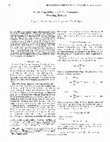
IEEE Transactions on Communications, 1994
Error-trapping decoding techniques are attractive due to their simple structure. Since 1962 sever... more Error-trapping decoding techniques are attractive due to their simple structure. Since 1962 several improved error-trapping methods have been devised in an effort to extend the capability and effectiveness in decoding multipleerror-correcting cyclic codes. Prarige and MacWilliains introduced a (T, U) permutation group applied to this errortrapping decoding strategy by making use of a set of codepreserving permutation to obtain k error-free positions from which the rest of the code word could be reconstructed. Recently, exact lower bounds on the code length n for (n, k, % + I) cyclic codes have been found by using 2-step and 3step (T, U) permutation groups. This paper presents a study on the relationship between the code parameters n, k, t and the number of permutation steps s, with 1 being odd. Some examples on the capability of (T, U) perniutation decodable (PD) cyclic codes are illustrated.
IEEE Transactions on Information Theory, 1992
The error equation is e 2 (x) = a14x4 + ai0x5 + a o x 6. Through this process two distinct errors... more The error equation is e 2 (x) = a14x4 + ai0x5 + a o x 6. Through this process two distinct errors (note that e,(x) = e,(x)) have been obtained. This is the error Case 3 in which the received word is in two decoding spheres. As previously discussed, the error that has the higher probability should be chosen. The user has to make a decision. In this example, it is assumed that the probability of a burst error of length un is less than the probability of a burst error length of U,, where un > U,. Therefore, the e2(x> should be chosen.
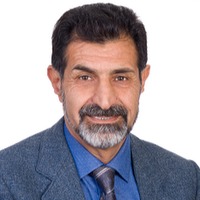
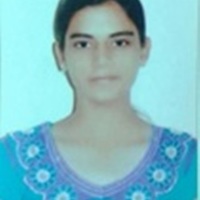
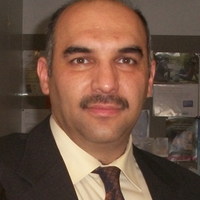



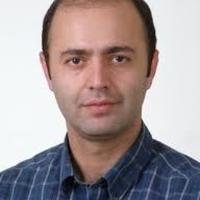
Uploads
Papers by Anader Benyamin-Seeyar